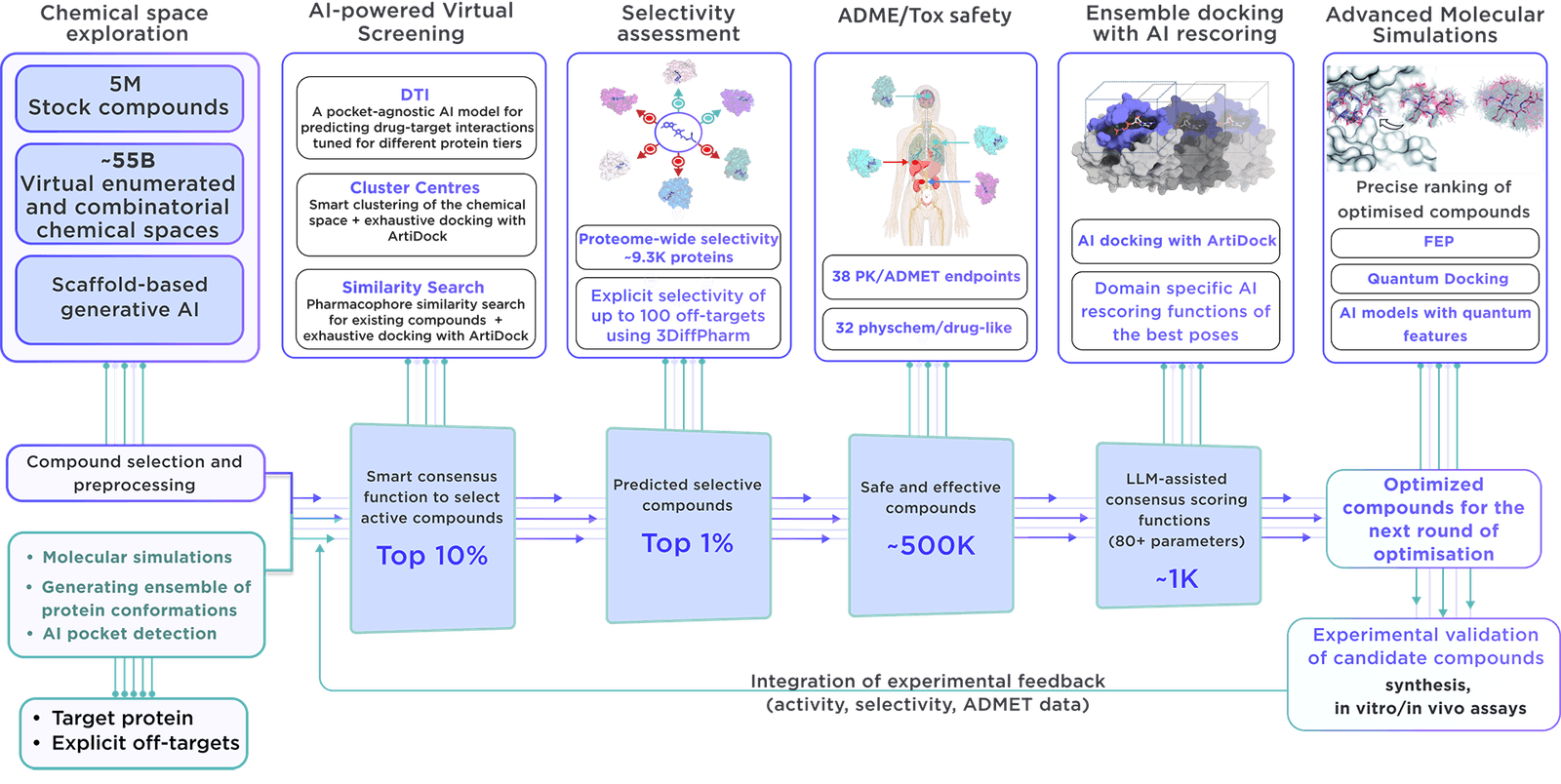Focused On-demand Libraries - Receptor.AI Collaboration
Explore the Potential with AI-Driven Innovation
This extensive focused library is tailor-made using the latest virtual screening and parameter assessment technology, operated by the Receptor.AI drug discovery platform. This technique is more effective than traditional methods, offering compounds with improved activity, selectivity, and safety.
The compounds are cherry-picked from the vast virtual chemical space of over 60B molecules. The synthesis and delivery of compounds is facilitated by Reaxense.
In the library, a selection of top modulators is provided, each marked with 38 ADME-Tox and 32 parameters related to physicochemical properties and drug-likeness. Also, every compound comes with its best docking poses, affinity scores, and activity scores, providing a comprehensive overview.
We utilise our cutting-edge, exclusive workflow to develop focused libraries for enzymes.
This approach involves comprehensive molecular simulations of the catalytic and allosteric binding pockets and ensemble virtual screening that accounts for their conformational flexibility. In the case of designing modulators, the structural adjustments caused by reaction intermediates are considered to improve activity and selectivity.
Several key aspects differentiate our library:
- Receptor.AI compiles an all-encompassing dataset on the target protein, including historical experiments, literature data, known ligands, and structural insights, maximising the chances of prioritising the most pertinent compounds.
- The platform employs state-of-the-art molecular simulations to identify potential binding sites, ensuring the focused library is primed for discovering allosteric inhibitors and binders of concealed pockets.
- Over 50 customisable AI models, thoroughly evaluated in various drug discovery endeavours and research projects, make Receptor.AI both efficient and accurate. This technology is integral to the development of our focused libraries.
- In addition to generating focused libraries, Receptor.AI offers a full range of services and solutions for every step of preclinical drug discovery, with a pricing model based on success, thereby reducing risk and promoting joint project success.
Receptor.AI
O14494
UPID:
PLPP1_HUMAN
ALTERNATIVE NAMES:
Lipid phosphate phosphohydrolase 1; PAP2-alpha; Phosphatidate phosphohydrolase type 2a; Phosphatidic acid phosphatase 2a
ALTERNATIVE UPACC:
O14494; B7ZKN8; G3XA95; O60457; O60463; Q17RZ4

